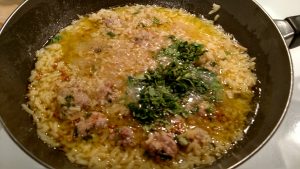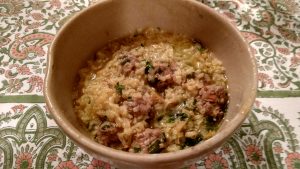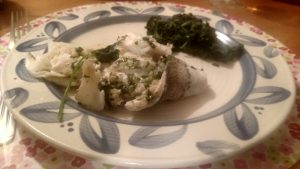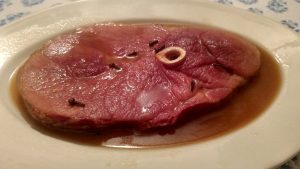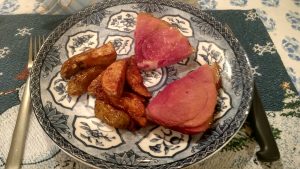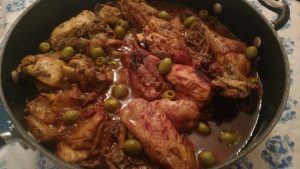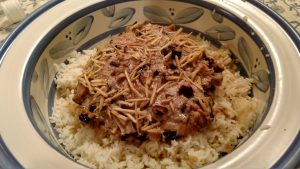Back when I was a young man, a hundred years ago, I stared collecting recipes. Up to that time my purview had been Caribbean cooking. Then I started expanding my palate and repertoire. On of the earliest recipes I collected was the one given below. The dish is called Pork Chops Hortense, and who first created it, I have no idea. If someone out there knows the provenance of this recipe, please let me know so that I can give credit to the appropriate party. Enough to say that it’s a delicious recipe that livens up the lowly pork chop and brings it to new heights.
Let me state that this can be served with any grain, pasta or, even, couscous. I served it over yellow rice, and it was perfect. Want to try it with brown rice, wild rice or other, no problem. It matches well with all, even mashed potatoes.
PORK CHOPS HORTENSE
Ingredients:
4 1-inch loin pork chops
Salt and freshly ground pepper to taste
1 tablespoon fresh chopped oregano or 1 teaspoon dried
3 tablespoons butter
1 tart apple, peeled and chopped
1 medium onion, peeled and sliced into thin rings
1 1/2 tablespoons flour
1 cup beef broth
1/4 teaspoon powdered mustard
3 tablespoons heavy cream
3 tablespoons brandy
Instructions:
- Rinse the chops under cold running water and pat dry with paper towels. Sprinkle with the salt, pepper, and oregano on both sides.
- Heat butter in a large skillet, and sauté the pork chops, apple and onion until pork chops are browned on both sides. Transfer pork chops to a heat-proof platter and place in a 300-degree oven to finish cooking. Leave the apple and onion in skillet and continue to sauté until apple and onion is tender.
- Sprinkle apple and onion with flour and cook about 2 minutes more. Blend in broth and mustard. Bring to a simmer.
- In a food mill, blender or food processor, purée skillet mixture, then return to skillet and heat through to near boiling. Blend in heavy cream and brandy. Pour mixture over pork chops and serve immediately. Yield: 4 servings.


